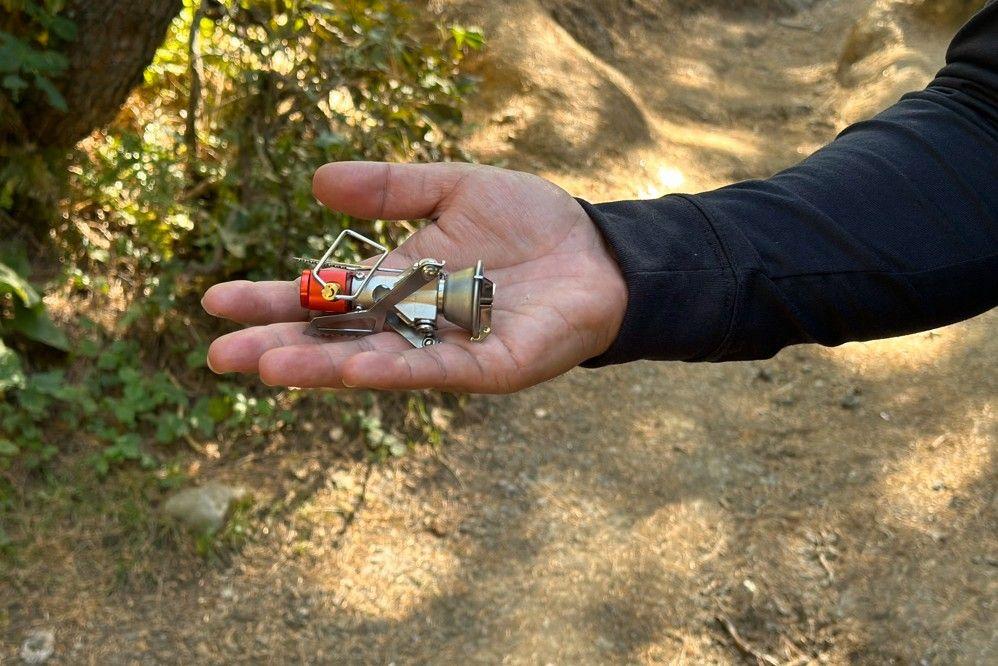Backpackers always need a stove on the trails. The MSR PocketRocket 2 is among the top-tier stoves that keep the backpack ultra-light and efficient. The portability, affordability, and balancing performance make it one of the most revered choices of the hikers. It boils water in 3.5 minutes, which indicates speed and efficiency of work. It has a weight of 2.6 ounces (ca. 98 g) that makes it compact and fitting. Considering everything positive, this stove has had a slight disadvantage in its simmer control and its efficiency in the windy weather. As a whole, the MSR PocketRocket is an ideal choice with its no-frills and featherweight.
MSR PocketRocket 2: Testing Results and Analysis
Boil Time and Fuel Efficiency
Before selecting this stove, I was concerned about its fuel average and efficiency. I read about its working capacity; however, after testing the stove myself, I came to know that it could boil 1 liter of water in 3.5 to 4 minutes.
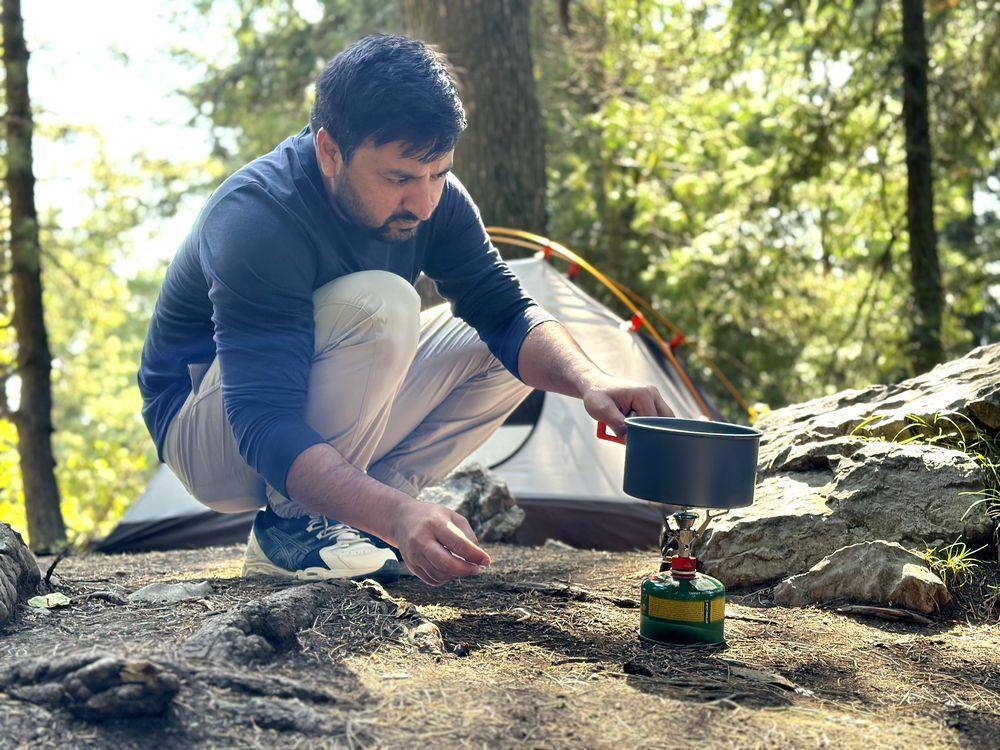
This average was astonishing, as I have used other high-end models like the Soto Windmaster that offered the same average. Comparatively, MSR PocketRocket 2 lags behind in efficiency from Jetboil. One canister of this stove can boil up to 12 to 14 liters of water.
This efficiency depends on the speed of wind and the coldness of the weather. The boil time increases in windier conditions, but the WindClip technology (small windshield around the burner) helps keep the flame going even in breezy conditions. It has a 7500 BTU burner, which heats quickly. Overall, it is a reliable performer for short trips and weekend excursions.
Weight and Packability
Another matter of concern for hikers is their backpack. I found the MSR PocketRocket 2 a featherweight, compact, and easy-to-carry item weighing only 2.6 ounces. Its lightweight nature makes it a perfect choice for ultra-light setups.

I could fold it into a 4-inch-long case, making it 20% smaller than the original size, which made it easy for me to carry. Its protective case makes it prominent in the backpack by adding security to the structure. While its competitors, like BRS, offer ever more lightweight options, the MSR PocketRocket 2 wins in durability.
Hikers who prefer stability may choose other options, but for those preferring packability, this stove is the best option.
Setup and Ease of Use
One of the biggest reasons I love the MSR PocketRocket 2 stove is its easy use. When you’re tired after a long day on the trail, the last thing you want is to struggle with your stove. With this one, you won’t.
I enjoyed setting up this stove as it is refreshingly simple and handy. I unpacked it, added the stove on the canister, ignited it, and set the dial for time. Its three-arm support holds any pot on top of it with stability; however, it shakes with larger bases.
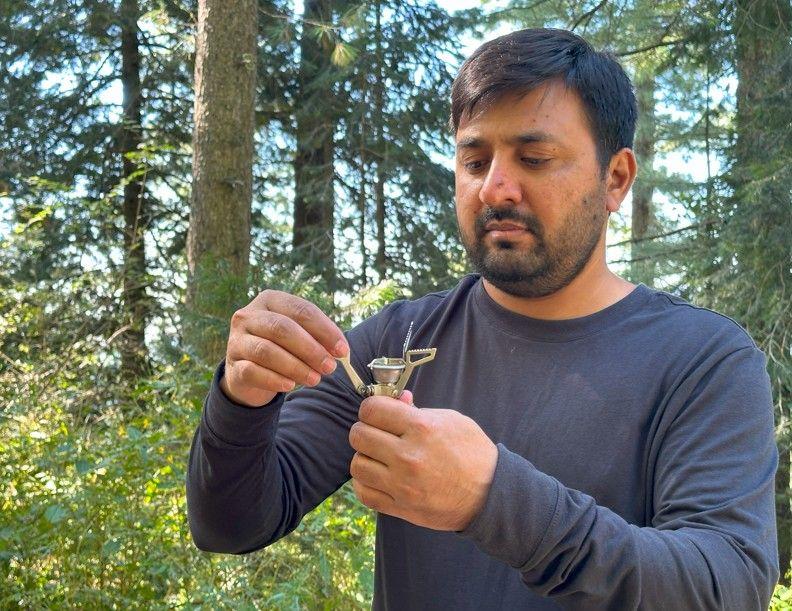
The ignition process is manual, meaning there’s no piezo igniter, so you’ll need a lighter or matches. While some may see this as a downside, I’ve found it pretty standard for ultralight stoves. I always carry a lighter, so it’s not a dealbreaker for me.
You can easily control the flame with the valve, but the lack of wind resistance shields makes it hard for the flame to work consistently. If you are a beginner, the construction of this stove may frustrate you a little, but for seasoned hikers, the straightforward mechanisms are always attractive.
Since its construction is simple, the maintenance is simpler. It works on the principle of keeping the burner clean. As a whole, this gear is handy but needs careful operation in high altitudes and in winds.
Once lit, the flame control is surprisingly good. I expected it to be a simple “on-off” situation, but you can adjust the flame for simmering, which is a huge bonus if you’re like me and enjoy making more than just boiling water for freeze-dried meals.
Simmering Ability
Simmering is where this stove shines compared to other ultralight options. MSR PocketRocket 2 handles lower heat settings way better than competitor stoves.
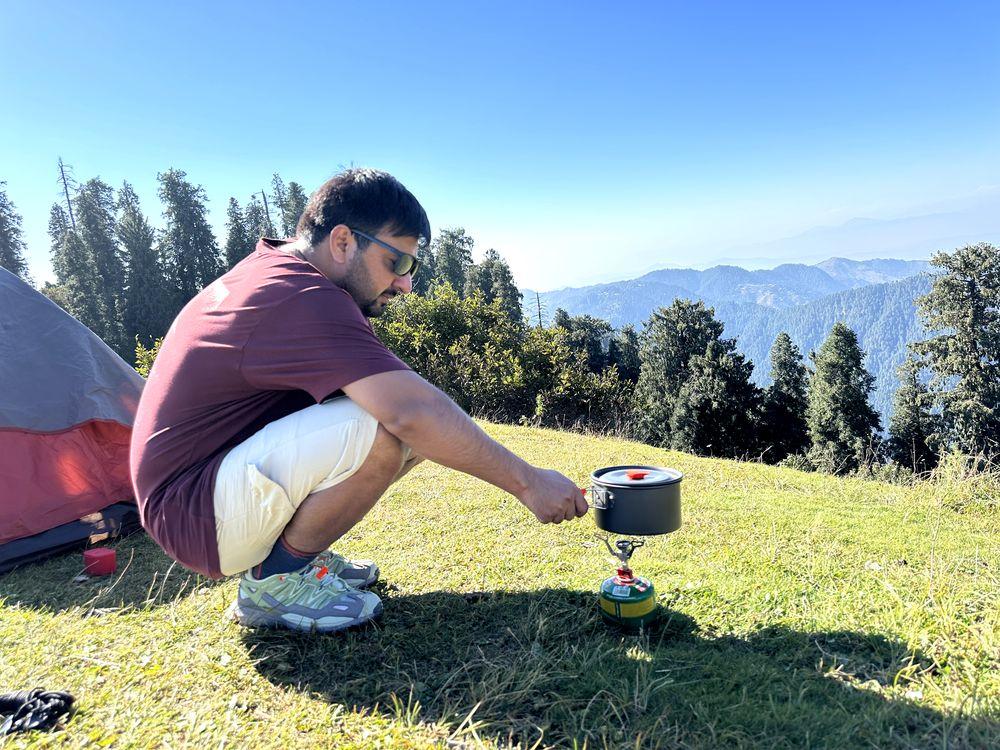
I’m a backpacker who likes to cook more elaborate meals on the trail, so the ability to simmer without burning my food is a big deal.
Simmering is a unique ability of a flame to cook food at low temperatures. In the windy weather, keeping a constant flame needs continuous adjustments. The MSR PocketRocket 2 can reduce to a low flame, but keeping it consistent is a headache for the user. If you are seeking a stove for meals that need continuous heat control, you may reconsider taking the MSR PocketRocket 2 on your hikes.
The control valve is very responsive, allowing you to fine-tune the flame. I’ve cooked in slightly bigger titanium and aluminum pots without any significant issues but the stove is better suited for smaller ones due to small burner head.
Quality and Durability
MSR PocketRocket is a stainless steel body and heat-resistant gear, which is highly durable compared to its counterparts. The thin wires of its supports may bend under heavy weight, however; these wires are sturdy to a large extent.
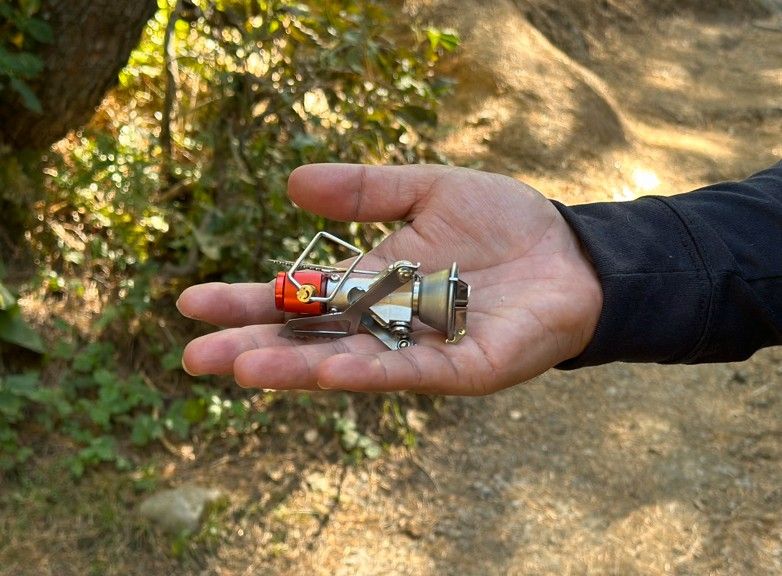
The durability of this stove is reliable but not to the extent that it could be used for group hikes and for cooking meals. You must handle it with care.
Price and Value
At around $60, the MSR PocketRocket 2 is in the middle of the price range for ultralight stoves. Given its compact size, weight (73 grams), and performance, it’s a great value.
It’s not the cheapest stove, but you’re paying for reliability and versatility. I’ve used other slightly cheaper stoves, but they lack the simmering ability and compact design of the PocketRocket 2.
If you do a lot of backpacking or long-distance hikes, the PocketRocket 2 is worth the investment. It’s also durable—I’ve had mine for couple of years now, and it’s held up well through rough use. MSR also provide valuable customer service to quickly resolve the customer issue which i think an added advantage.
Pros and Cons
Pros of this stove include its lightweight, durability, boiling time, and affordability. Cons include poor wind control and lack of electric ignition.
This stove is good for solo hikes, but for group adventures, you cannot solely rely on this for cooking.
Pros
- Small and Lightweight
- Good simmering ability
- Solid and well-made
- Value for Money
Cons
- Long boiling times during heavy winds.
- No Piezo Igniter
- Support for Small Pots only
Comparing the MSR PocketRocket 2 Other Backpacking Stoves
MSR PocketRocket 2 is a great tool for hiking, but it has limitations. In comparison with Soto Windmaster, it lacks a wind shield, four pot supports, and regulated valves as simmer controls. Soto Windmaster weighs slightly higher (0.5 oz) and also costs $15 extra compared to MSR.
The Jetboil Flash stove, in comparison to the MSR PocketRocket 2, boils faster (1 liter in 2–3 minutes), is superior in its flame, and offers stability in winds. With all the good features, it weighs 12.6 oz, which exceeds the capacity of the ultra-light hikers.
To put it in a nutshell, I found Windmaster stable with having a simmer control, adding to its qualities. Jetboil is good for groups and trips in cold weather where efficiency in speed and insulation matters the most. MSR PocketRocket 2 offers a middle ground with lightweight, cheaper than high-end models, and is reliable for normal weather conditions.
Conclusion: Is MSR PocketRocket 2 Worth It?
The MSR PocketRocket 2 is worth each penny for its simple style and lightweight. It offers a lightweight and stable option only for $45, which gives great value to the hikers. Even though it is unstable in winds and cooking, it still offers a design that occupies less space and has blazing boiling time. It would have been an all-time, all-weather favorite if it had a windscreen and a flame regulator. Those who need all-weather reliability may seek options like Soto Windmaster and Jetboil Flash stoves, which have wind screens and speeds, respectively. Mostly, hikers prefer the MSR PocketRocket for its reliability, durability, and affordability regardless of the features it lacks.
FAQs
How Much Fuel Does the MSR Pocket Rocket 2 Use?
As an 8 oz canister boils around 12–14 liters of water, it roughly works as 8g per liter. This average makes it an efficient stove in comparison. This average drops with the speed of wind and dropping temperature. You can save fuel by covering the flame with a windscreen.
What is the Difference Between PocketRocket 1 and 2?
PocketRocket 2 is 20% smaller and 10% lighter than 1. Its burner is designed for smoother and quieter operation. Both lack a windscreen, but the pot support is robust and more efficient in PR2.
What is the Best Fuel for the Pocket Rocket 2?
For standard work, use threaded Iso-Butane-Propane fuel, while for cold-weather conditions, avoid Butane-only canisters, which reduce the efficiency of the stove by freezing and liquefying. Four-season mixes work best for winters and low-temperature situations.
How Long Does PocketRocket Fuel Last?
An 8 oz canister boils around 12–14 liters of water; it roughly takes 3.5 to 4 minutes to boil 1 liter of water. Collectively, it takes around 60-90 minutes when it is used at full blast. For solo hikers, one canister works best for three days, while you should take extra canisters according to your hiking duration.
